Check out the May 23 edition of What’s Trending in Aerospace, where editors and contributors for Avionics International bring you some of the latest headlines and updates happening across the global aerospace industry.
Space
Virgin Galactic Completes Test Flight from Spaceport America
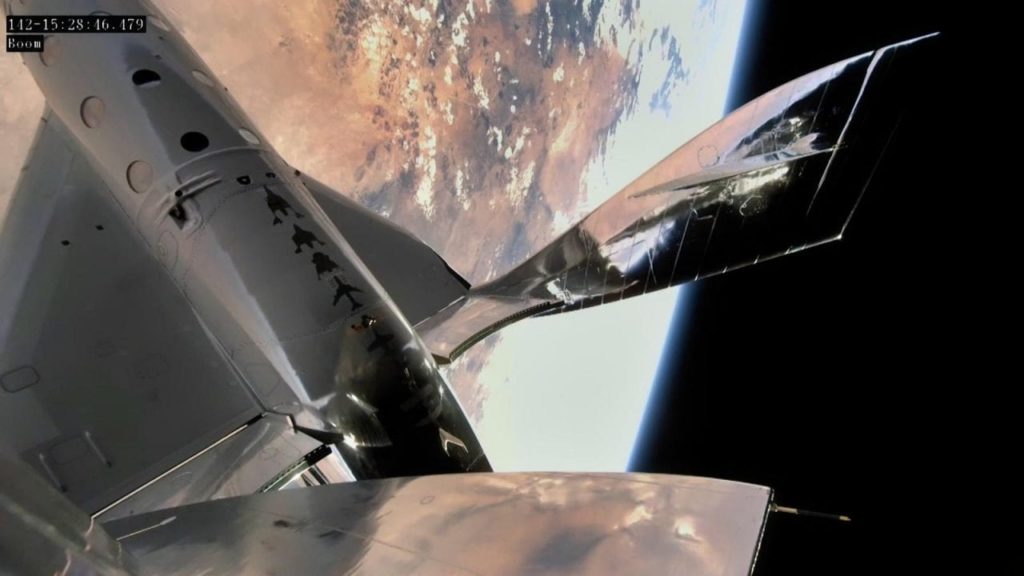
Virgin Galactic’s VSS Unity 2 completed its third successful spaceflight on May 22, 2021. (Virgin Galactic)
Virgin Galactic completed its third successful spaceflight with the VSS Unity on Saturday May 22, and the first ever human space flight from Spaceport America, New Mexico. VSS Unity achieved a speed of Mach 3 after being released from the mothership, VMS Eve, and reached space, at an altitude of 55.45 miles, according to a May 22 press release.
On VSS Unity’s flight deck were CJ Sturckow and Dave Mackay, while Kelly Latimer and Michael Masucci piloted VMS Eve. CJ, who flew as pilot-in-command.
The company fulfilled a number of test objectives during the flight, according to the release, including:
- Carried revenue-generating scientific research experiments as part of NASA’s Flight Opportunities Program.
- Collected data to be used for the final two verification reports that are required as part of the current FAA commercial reusable spacecraft operator’s license.
- Tested the spaceship’s upgraded horizontal stabilizers and flight controls and validated EMI reductions.
“We will immediately begin processing the data gained from this successful test flight, and we look forward to sharing news on our next planned milestone,” Michael Colglazier, Chief Executive Officer of Virgin Galactic, said in a statement.
Check out this video of the flight tweeted by Virgin Galactic on Saturday.
Commercial
Breeze Airways Officially Launches Operations from 16 Cities
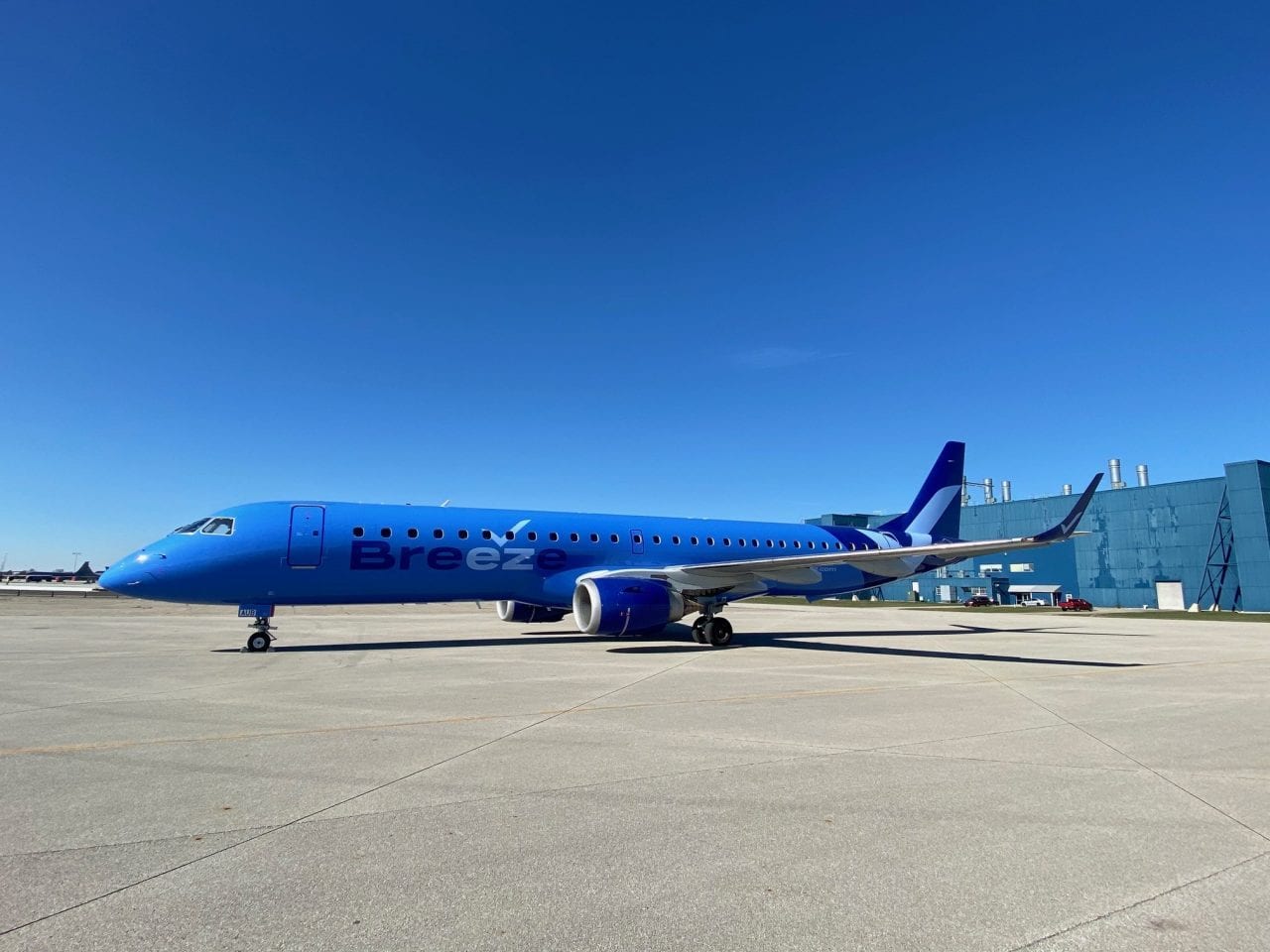
Breeze will operate a fleet of 13 Embraer e-jets ahead of Airbus A220 aircraft arriving from October, according to a May 21 press release. (Breeze Airways)
Breeze Airways, the new Utah-based low cost carrier launched in 2020 by JetBlue founder David Neeleman, officially launched its debut network in a May 21 press release.
The airline is headquartered in Salt Lake City, and is focusing on operations from four main airports, including “Tampa, FL; Charleston, SC; New Orleans, LA; and Norfolk, VA,” according to the release.
“Breeze will operate 13 single-class Embraer aircraft this summer, flying routes with an average flight length under two hours. The ten E-190 jets will be configured to seat 108 Guests while the three E195 aircraft will have 118 seats,” the airline said in the release.
Additionally, the new low cost carrier will start taking delivery of 60 Airbus A220 aircraft, beginning in October of this year and delivering at about one per month for five years. The A220 routes, which will be announced later this year, will serve routes longer than two hours in duration.
“Together, we created Breeze as a new airline merging technology with kindness. Breeze provides nonstop service between underserved routes across the U.S. at affordable fares. A staggering 95 percent of Breeze routes currently have no airline serving them nonstop,” Neeleman said in a statement.
First Long-Haul Flight of SAF From France
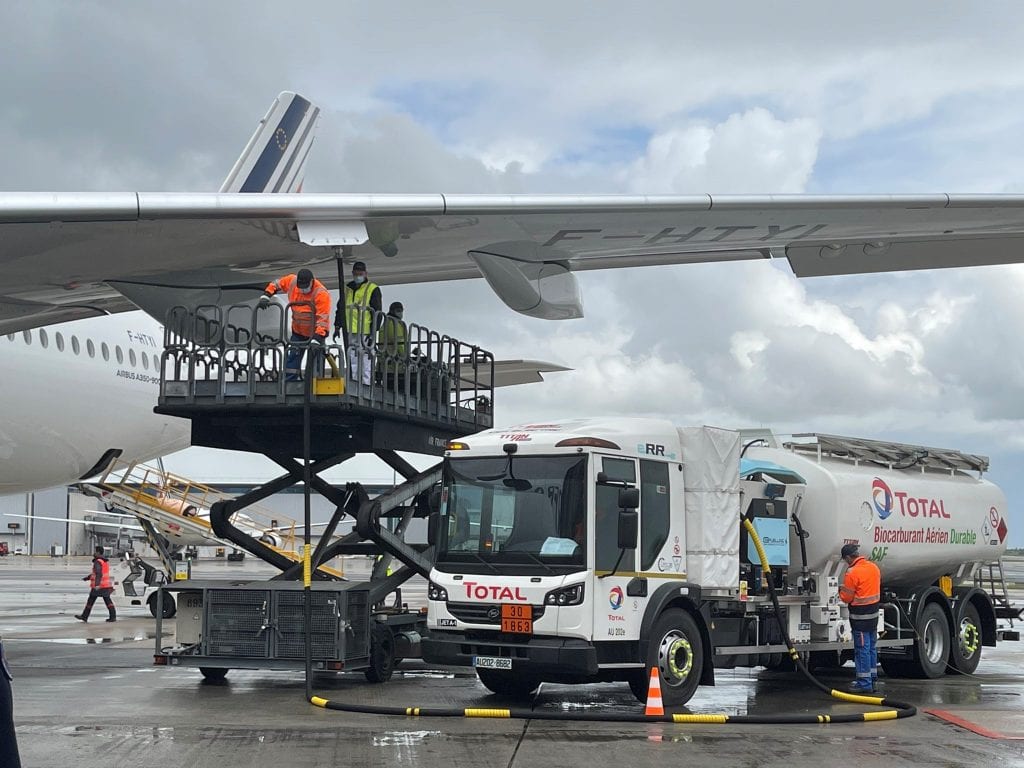
No modifications were made to the storage, distribution infrastructure, aircraft or engines to use the SAF.
Air France Flight 342 became the first long-haul flight powered by sustainable aviation fuel (SAF) produced in France when it took off from Paris-Charles de Gaulle airport for Montreal on May 18, according to a release.
The flight was a joint effort between Air-France-KLM, Total, Groupe ADP, and Airbus, according to the release from the companies. The SAF used was produced in Total’s French plants.
“This first flight from Paris-Charles de Gaulle airport is a symbol of our ambition to decarbonize air transport by integrating new sustainable air fuels into aircraft,” Augustin de Romanet, Chairman and CEO of Groupe ADP, said in a statement. “The European air transport roadmap aims for zero net emissions by 2050, and we are keen, as an airport operator, to support this energy transition and to embark, without delay, on the path of transforming our operation process and infrastructure.”
No modifications were made to the storage, distribution infrastructure, aircraft or engines to use the SAF, according to the release. The SAF used was produced from cooking oils at its La Mède biorefinery in southern France and at its Oudalle factory near Le Havre. This did not include any virgin plant-based oil. It also received certification from the International Sustainability & Carbon Certification System.
“The development of biofuels is part of Total’s broad-energy strategy for decarbonizing the transportation industry,” Patrick Pouyanné, Chairman and Chief Executive Officer of Total, said in a statement. “After successfully launching production of sustainable aviation fuels at our facilities in France last March, we are continuing to adapt our industrial facilities to prepare for the growing demand from the aviation industry in the coming decade. By directly reducing the carbon intensity of the energy products used by our aviation industry customers, we are actively working with them to achieve our ambition to get to net zero by 2050, together with society.”
New Legislation Could Give Tax Benefits to US Airlines for Using Sustainable Aviation Fuel
Lawmakers introduced new legislation Thursday that would establish a blender’s tax credit for using sustainable aviation fuels (SAF) that reduce greenhouse gas emissions by at least 50 percent.
The Sustainable Skies Act was introduced by representatives Bradley Schneider (D-IL), Dan Kildee (D-MI), and Julia Brownley (D-CA) and would establish a $1.50 per gallon tax credit for SAF that reduces emissions by 50 percent. If the reduction is over 50 percent, $0.01 is added for every percentage point maxing out at $2.
“Airlines have made sustainability commitments to reduce the carbon emissions, and the SAF industry has demonstrated its preparing to meet that demand,” Schneider said during a press call announcing the legislation. “But there is a clear need for federal investment to help SAF producers scale up and ensure aviation can meet their goals. This tax legislation represents a well-calibrated well-timed effort to kickstart SAF’s long-term viability. Our legislation enjoys the support of the aviation industry, the environmental community, fuel producers, and organized labor. The Sustainable Skies Act represents a pragmatic focused approach to reducing aviation’s carbon emissions.”
Business & GA
Aerion Supersonic is Shutting Down
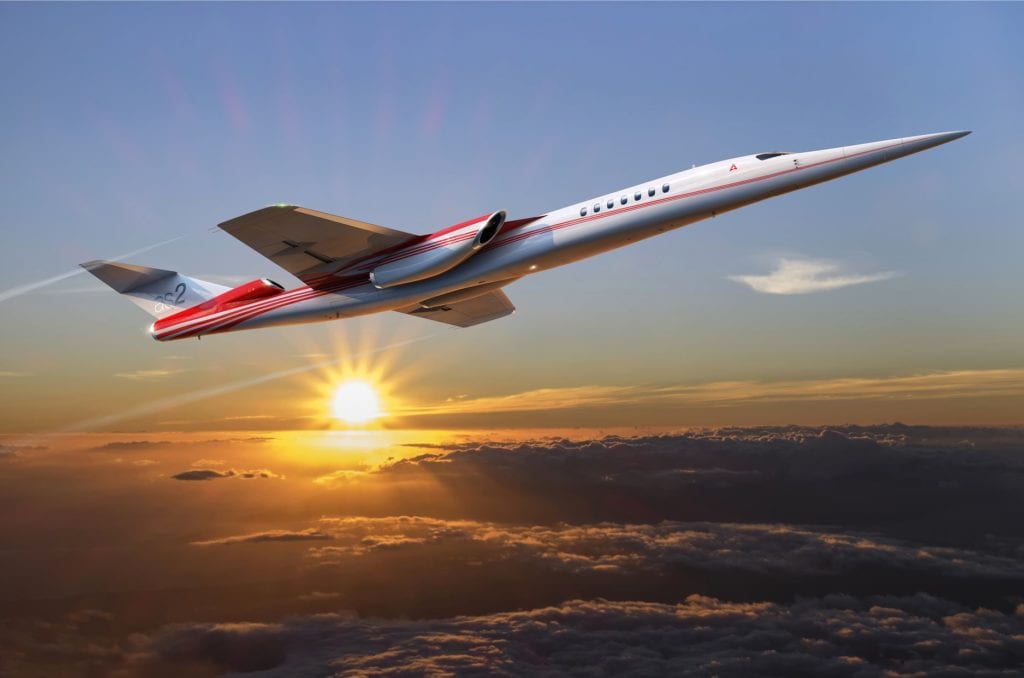
Aerion Supersonic is shutting down its production plans for the AS2 supersonic jet. (Aerion)
According to reports confirmed by several media outlets, including CNBC, Nevada-based Aerion Supersonic is no longer pursuing its plans to develop business jets capable of flying faster than the speed of sound, and is shutting down.
“In the current financial environment, it has proven hugely challenging to close on the scheduled and necessary large new capital requirements to begin production of its AS2 supersonic jet,” the company said in a statement reported by CNBC. “Aerion Corporation is now taking the appropriate steps in consideration of this ongoing financial environment.”
The announcement comes several months after the company announced an avionics supplier agreement with Honeywell Aerospace for the AS2, which was previously on track to fly by 2024.
Luxaviation Partners with Lilium on eVTOL Airline and Operations Training Support
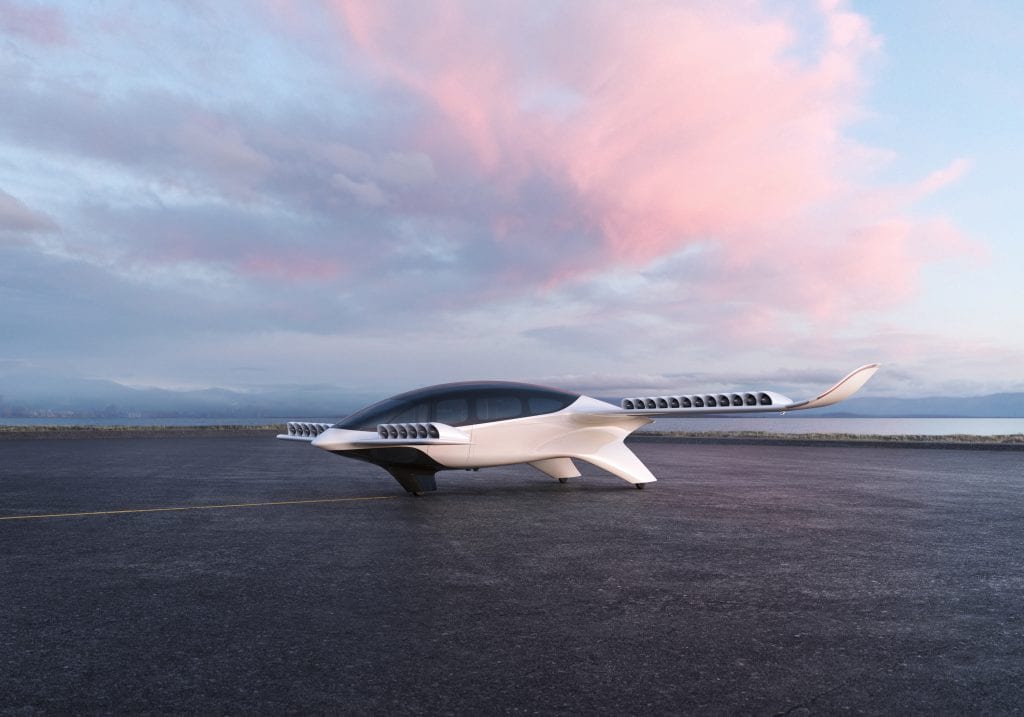
Luxembourg-based business jet operator Luxaviation is partnering with Lilium, the Munich, Germany-based eVTOL developer whose 7-seater jet—pictured here—has received CRI-A01 certification from EASA and concurrent type certification with EASA and the FAA. The 7-seater jet has a cruise speed of 175 mph and flies at 10,000 feet with a range of 155 miles. (Lilium)
Luxembourg-based private aviation operator Luxaviation has established a new partnership with Munich-based electric vertical takeoff and landing (eVTOL) jet-maker Lilium to support the building out of their airline operations in Europe, according to a May 20 press release.
Under the partnership, Luxaviation will build on its track record of becoming the first business jet operator to obtain a European Union Aviation Safety Agency Air Operator Certificate (AOC) approval to become responsible for parts of the airline operations being developed by Lilium. These responsibilities will include “securing necessary approvals and managing pilots, which will be trained following a type rating concept developed by Lufthansa Aviation Training, another Lilium partner,” according to the release.
“Electric vertical take-off and landing aircraft will fundamentally change the way we travel, and the Lilium network is poised to be at the forefront of this sea change in aviation,” Patrick Hansen, Group CEO at Luxaviation Group said in the release.
Airbus Corporate Jets Teams with Latécoère to Develop Li-Fi In-flight Entertainment Monitor
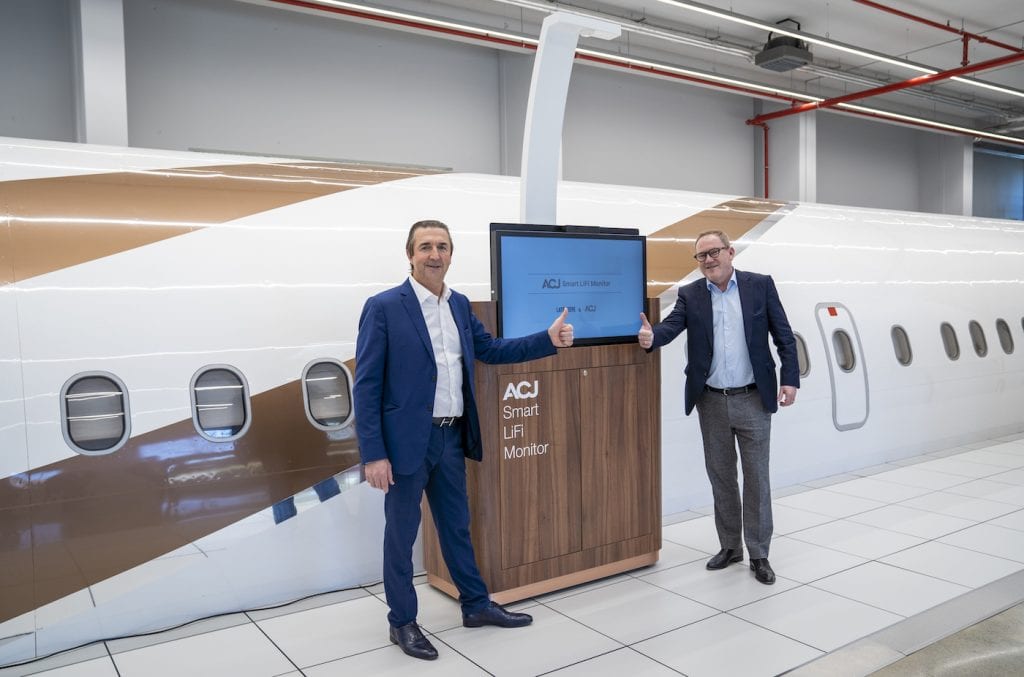
Airbus Corporate Jets is bringing a new smart Li-Fi monitor to its business jet family. (Airbus Corporate Jets)
Airbus Corporate Jets (ACJ) announced a new partnership with Toulouse-based electronic wiring interconnection system (EWIS) supplier Latécoère Interconnection Systems to develop the aircraft manufacturer’s first Light Fidelity (Li-Fi) in-flight entertainment (IFE) monitor on the first day of the European Business Aviation Conference and Exhibition’s (EBACE) 2021 online forum.
According to a May 17 press release, the two companies are developing the next generation “ACJ Smart Li-Fi Monitor,” with the goal of having it certified by the European Union Aviation Safety Agency (EASA) before the end of the year. The monitor will usher in a new generation of cabin IFE technology for the business jet division of Airbus, as it will also feature Bluetooth, casting, mirroring, videoconferencing, and Wi-Fi all embedded inside a single screen without the need for an associated computing box or server.
U.S., Canada, and EASA Approve Astronics EVS for Airbus Helicopters
The U.S., Canada, and the European Union Aviation Safety Agency (EASA) have approved Astronics Corporation’s Max-Viz 1200 and 1400 Enhanced Vision Systems (EVS) for EC130 B4 and T2 Airbus Helicopter models, according to a May 20 release.
“The Astronics’ Max-Viz technology provides pilots with an unprecedented level of situational awareness and safety,” Tom Geiger, Max-Viz Business Unit Director for Astronics, said in a statement. “Our EVS is perfectly suited for these single-engine light utility helicopters. To advance the application of our technology, we worked closely with STC holder AVIO dg to get this excellent technology approved for daily missions on the EC130.”
The Astronics’ EVS systems are lightweight, solid-state, low power, and feature an uncooled thermal camera, according to the release.
GAMA Q1 Numbers In
Turbine helicopters and propeller airplanes showed increased deliveries and business jet and piston helicopter shipments were flat in the General Aviation Manufacturers Association (GAMA) first-quarter shipments and billings report, according to a May 20 press release.
Piston airplane deliveries increased about 7 percent and turboprop airplane deliveries increased about 18 percent when comparing the first quarter of 2021 to 2020, according to the release. Civil-commercial turbine helicopter deliveries increased about 8 percent and piston helicopter deliveries matched last year’s numbers.
“The first quarter of 2021 shows progress for the industry. It is encouraging to see manufacturers begin to bounce back from the impacts of the pandemic,” GAMA President and CEO Pete Bunce, said in a statement. “Although, we are not yet in the clear. The industry continues to face headwinds, especially with ongoing supply chain issues and pandemic related restrictions and constraints to global travel. It is important that we continue working with governments to assist in strengthening our supply chain, safely easing travel related restrictions and protecting our highly skilled workforce. Our outlook toward the future is exciting, particularly in light of our industry’s commitment to, and focus upon, environmental sustainability which continues to spur development of new aircraft, innovative technologies, and the production, distribution and uptake of Sustainable Aviation Fuel.”
Military
Rohde & Schwarz Radio Comms to be Used in T-7A Red Hawks
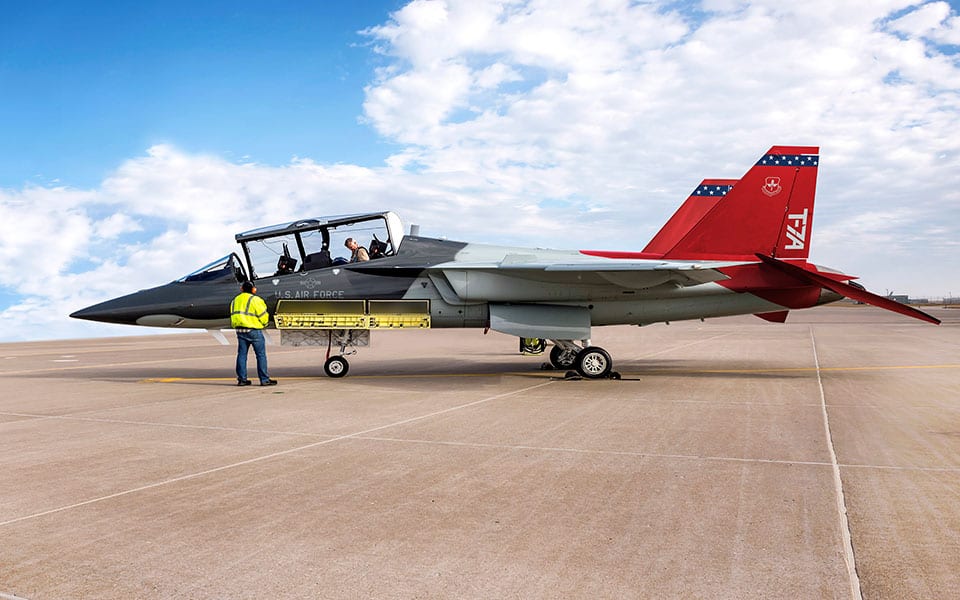
Boeing-Saab’s T-7A aircraft, shown here with drop-down access panels open, has begun production at the company’s St. Louis production line. (Boeing)
Boeing awarded a contract to Rohde & Schwarz for R&S MR6000R multiband-capable airborne transceivers to be used on the new advanced pilot training system used by the U.S. Air Force on the T-7A Red Hawks, according to a May 19 release.
“This cooperation is the culmination of years of unwavering teamwork by Boeing and Rohde & Schwarz,” Michael Hostetter, vice president of Boeing Defense & Space Germany, said in a statement. “Along with updated technology and performance capabilities, the T-7A will be fitted with an enhanced radio communications suite, giving it an added benefit, preparing pilots for fifth-generation aircraft. We are looking forward to working with Rohde & Schwarz on this very important project, as well as future opportunities.”
The R&S MR6000R covers the frequency range from 30 MHz to 400 MHz and supports NATO frequency algorithms for interoperability, according to the release.
“We are proud to work with Boeing, having committed ourselves to delivering systems that meet the training needs of the U.S. Air Force,” Frank Dunn, President and CEO of Rohde & Schwarz USA (and Canada) Inc., said in a statement. “The airborne transceivers from the SOVERON radio family provide excellent RF characteristics suitable for applications in harsh military environments for all types of airborne platforms. As this is a software defined radio, we can adapt it for further training opportunities.”
FLIR Deal Gives Teledyne Comprehensive Unmanned Systems Portfolio
Teledyne Technologies’ acquisition this month of FLIR did more than dramatically expand its portfolio of sensor capabilities, it expanded the company’s suite of unmanned systems that now range from unmanned and remotely operated undersea and surface vessels to unmanned ground and aerial systems for solutions across multiple domains.
FLIR, prior to Teledyne closing the deal for the company, also recently booked a $15 million order to deliver more palm-sized Black Hornet 3 unmanned aerial vehicles (UAVs) to the Army, bringing order totals to $85 million under the Soldier Borne Sensor program. FLIR also has a lineup of small vertical take-off-and-landing UAVs and several small fixed-wing UAVs.
“As a combined company, Teledyne FLIR will uniquely provide a full spectrum of imaging technologies and products spanning X-ray through infrared and from components to complete imaging systems. Teledyne FLIR will also provide a complete range of unmanned systems and imaging payload across all domains ranging from deep sea to deep space. Finally, I want to congratulate Edwin and Todd, whose promotions are very well deserved,” Robert Mehrabian, Executive Chairman of Teledyne, said in a May 13 press release.
Teledyne and FLIR filed the vote results for their respective special meetings of stockholders on a Form 8-K with the U.S. Securities and Exchange Commission on May 13, 2021.
Regulation
UK CAA and European Union Aviation Safety Agency Agree on Technical Implementation Procedures
In a May 17 press release, the UK Civil Aviation Authority (CAA) and European Union Aviation Safety Agency (EASA) announced that they have concluded negotiations on the “Technical Implementation Procedures (the TIP).”
The TIP gives both the CAA and EASA oversight of the Air Safety Agreement that was signed between the UK and EU in December, and sets out the measures the aerospace sector must take in order to design and produce new aerospace parts moving between the UK and the EU, according to the release.
“This agreement today provides the clarity aerospace organizations need to allow them to operate efficiently under the post-EU regulatory landscape. While the UK system is now independent of the EU regulatory system, both sides recognize the importance of close collaboration to overseeing the highest standards of aviation safety,” Richard Moriarty, Chief Executive at the UK Civil Aviation Authority’s, said in the release.
Connectivity
Viasat Signs IFC Content Partnership with the NBA
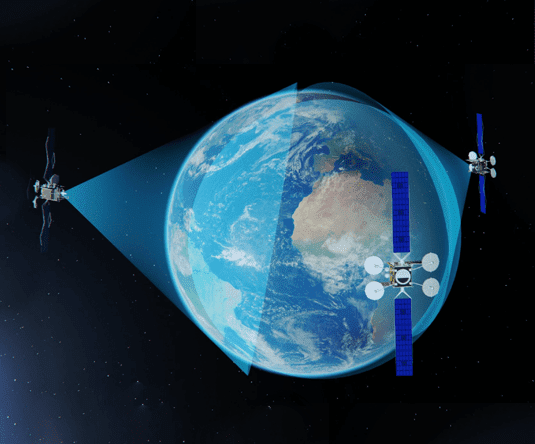
The Viasat-3 constellation is to deliver three terabits per second of capacity. (Viasat)
Viasat has signed a multi-year In-Flight Connectivity (IFC) content partnership with the National Basketball Association (NBA) to make its live game subscription service NBA League Pass available to airline passengers. The initial agreement includes Viasat-equipped planes from JetBlue Airways and American Airlines, according to a Viasat representative, with more airlines to come.
Under this partnership, passengers can watch live and on-demand NBA games and content on their personal electronic devices at no extra cost when they register for NBA League Pass in-flight. The service will begin for the 2021 NBA Playoffs, which start May 22.
One limitation is that the service is only available on international flights — the agreement doesn’t include domestic flights within the U.S., Canada, or China.
Viasat said this partnership is an example of how it is offering premium Over-the-Top (OTT) content and streaming experiences for in-flight customers.
Ball Aerospace and Microsoft Demonstrate Satellite-to-Cloud Data Processing

(Via Satellite)
Ball Aerospace and Microsoft have demonstrated satellite-to-cloud data processing in recent tests for the U.S. Department of Defense, that also involved Telesat’s Low-Earth Orbit (LEO) satellites.
In the tests, announced by Ball Aerospace on Wednesday, simulated data from Overhead Persistent Infrared (OPIR) was pushed to Microsoft’s Azure cloud where it was processed using Ball-developed event-driven architecture. The data was then disseminated to multiple endpoints. In the final demonstration, Telesat joined completed a direct downlink of data from its network of LEO satellites to a Ball-built electronically steerable Ka-Band phased array affixed to a tactical vehicle
The companies said these tests proved commercial cloud computing can process and securely deliver actionable information quickly, to a ground station, command center, or the battlefield. The demonstrations were enabled by the Defense Innovation Unit (DIU), and support the U.S. Space Force Space and Missile Systems Center’s (SMC) CASINO program office, which stands for Commercially Augmented Space Inter-Networked Operations.
eVTOLs
Skyports Selected for 2 New Projects in Japan
Skyports, a vertiport company, will participate in two electric vertical take-off and landing (eVTOL) projects in Japan’s Osaka Prefecture, the company announced in a May 21 release.
“As part of these projects, we are helping Osaka fulfill its vision of becoming an urban air mobility center in Japan, providing not only a vital facility to support the burgeoning air taxi market but demonstrating the benefits that drone delivery services will provide to the region,” Duncan Walker, chief executive officer at Skyports, said in a statement. “The fact that we have been selected to contribute to multiple programs aimed at developing Japan’s AAM ecosystem is testament to the work that Skyports does. We look forward to working with new and existing partners to enable AAM to thrive.”
The projects will include being one of five organizations providing eVTOL expertise to the Osaka prefecture Super City and participating in Osaka Prefecture’s “Green Table,” according to the release.
Embedded
AMETEK Abaco Systems Upgrade Provides Enhanced Capabilities for Air Force Aircraft
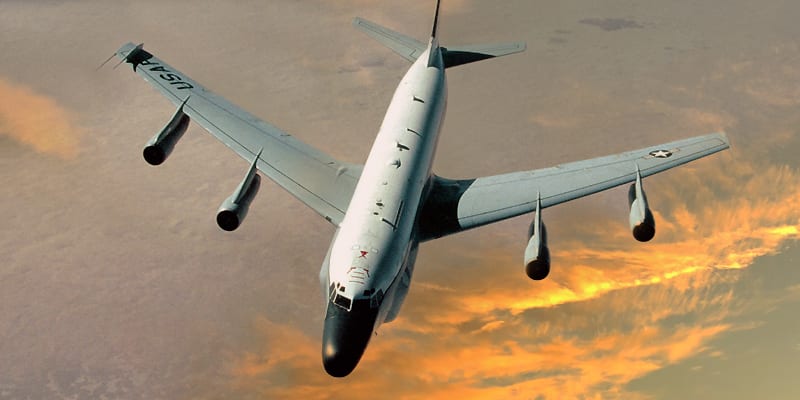
The upgrades were valued by the company initially at $211,000 with a lifetime potential of $20 million, according to the release. (Abaco)
AMETEK Abaco Systems announced a design upgrade for the VP460 6U VPX Direct Radio Frequency Processing System and the SBC627 6U OpenVPX rugged single board computer that will deliver a combination of radio frequency system on chip and field-programmable gate array in a single card design for U.S. Air Force aircraft, the company announced in a May 19 press release.
“Our innovative approach with the VP460 and SBC627 brings the opportunity to supply an upgrade from old systems, which recorded data for later analysis, to new technology allowing for real-time processing of ELINT and SIGINT with the latest tech offerings,” Pete Thompson, VP of Product Management at Abaco said in a statement. “Delivering best in class products to assist in mission-critical operations is at the core of our commitment to supporting warfighters on land, air and sea.”
The upgrades were valued by the company initially at $211,000 with a lifetime potential of $20 million, according to the release.
